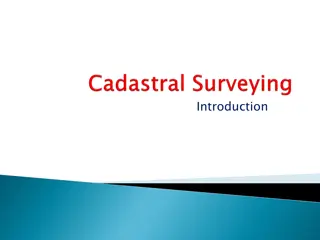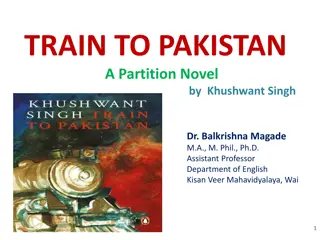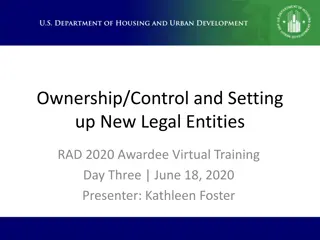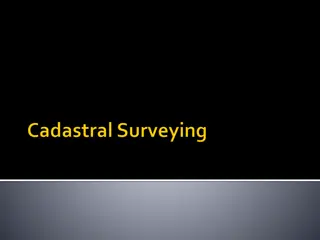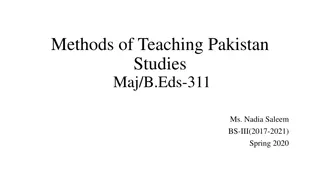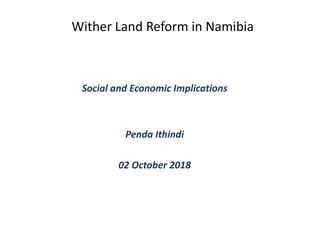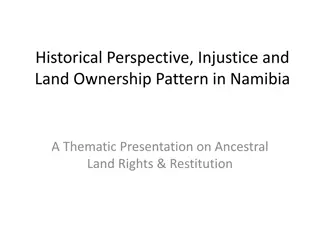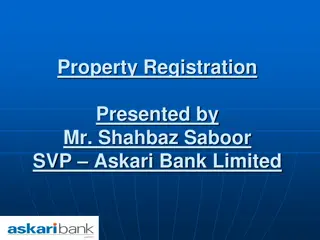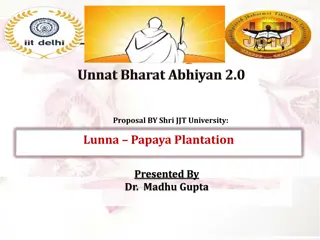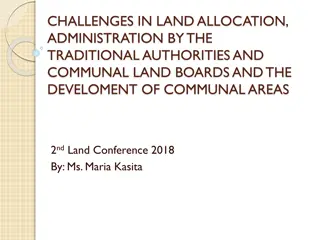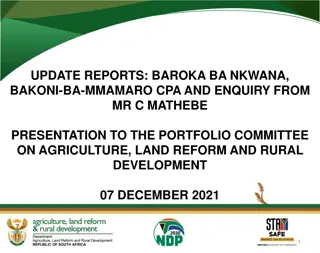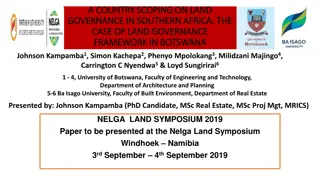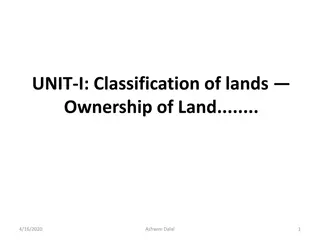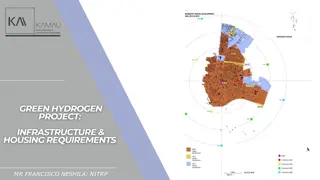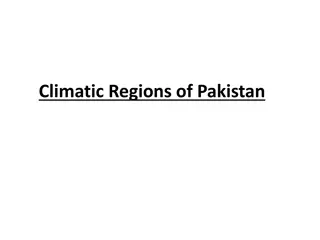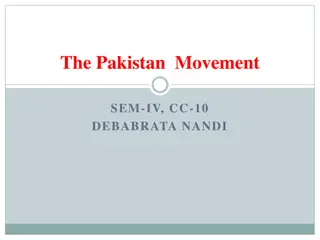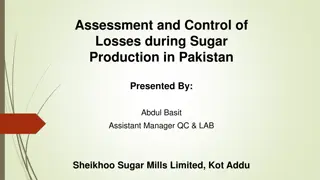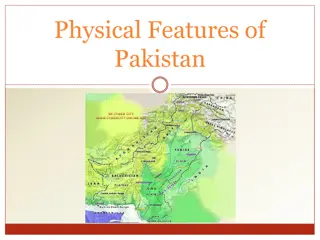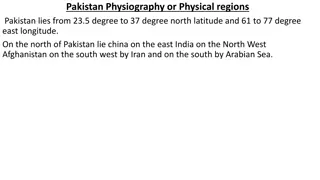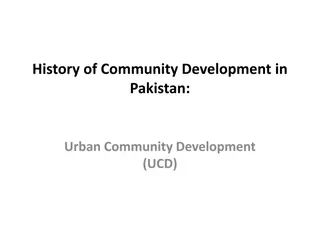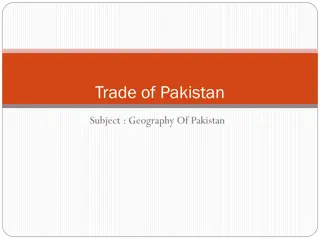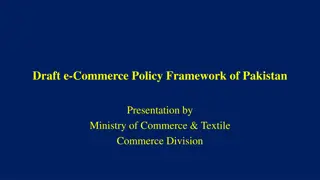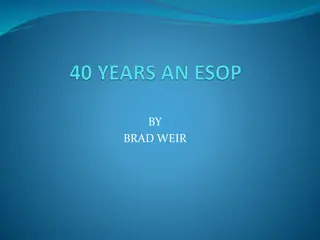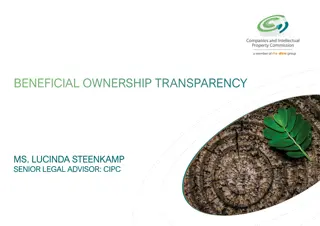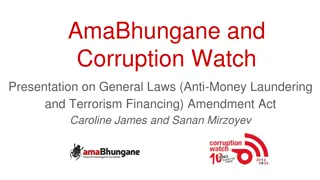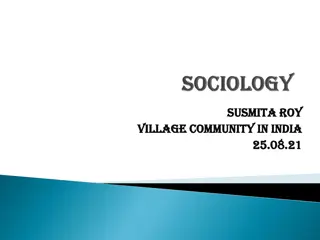Understanding Shamilat-e-Deh: Common Village Land Ownership in Pakistan
Shamilat-e-Deh refers to common village land in Pakistan jointly owned by landowners for community purposes. This traditional system dates back to British rule in the subcontinent and involves shared ownership of resources like mosques, schools, and grazing lands. Landowners' shares in Shamilat are proportional to their individual land holdings, and rules govern the buying and selling of these shares. The concept varies geographically, with some areas having unique ownership structures.
Download Presentation

Please find below an Image/Link to download the presentation.
The content on the website is provided AS IS for your information and personal use only. It may not be sold, licensed, or shared on other websites without obtaining consent from the author. Download presentation by click this link. If you encounter any issues during the download, it is possible that the publisher has removed the file from their server.
E N D
Presentation Transcript
2 SHAMILAT-E-DEH By Muhammad Zaib Khan Additional District & Sessions Judge-II, Mansehra
3 BACKGROUND: After the war of 1857, when Great Britain established their government in sub-continent. They noticed the open lands around the villages. They wanted to collect taxes from that land. For this purpose they invited the people of village for digging a well and cultivation of land. Some volunteers came forward and cultivated the land. Government levied the taxes upon the produce and those person became founders or Aala Maliks of the shamilat. Some of the people purchased the land, who were called Adna Maliks. Water source, masjid, grazing fields, school, and graveyard near the village population were common land of the owners in the village and the same is called shamilat-e-deh. Moza jat and khewat made in Punjab after its formation in 1849 and the same were made in NWFP (now KPK) in the year 1901.
4 Shamilat-e-Deh Shamilat land is land in a village which is jointly owned and possessed by the landowners of that village and is meant to be used for the common purposes of the village community.
5 Shamilat-e-Deh Shamilat land or common property: A) The terms Shamilat or Shamilat Deh are used in Pakistan to denote common land of a village. The best translation of Shamilat in the English language would be CommonLand or CommunityLand ; b) Shamilat land is a grant given by the State, out of State land, owners of the village to be used for their common is usually granted at the time of settlement; c) Shamilat land is that land in a village which is jointly owned possessed by the landowners of that village and is meant used for the common purposes of the village community. Such common purposes include buildings, Masjids, Schools, dispensaries, village ponds, village roads, cattles etc; to the purposes and and to be graveyards, community play grounds, grounds passages/grazing of
6 Shamilat-e-Deh d) All persons recorded as owners of land in a village are also joint owners of Shamilat of the village, their shares being proportionate to the size of their holding vis- -vis total farm land in the village; e) When they sell their land, the share of shamilaat also goes to the new buyer accordingly. Landowners cannot sell their share of Shamilat without selling a part or the whole of their landholding; f) Similarly, co-owners of land cannot move to encroach upon more Shamilat land than is already allotted to them and encroachers can be ejected by moving an application to the revenue authorities; and g) There is another category of shamilat in certain areas in Pakistan where no settlement has taken place. Under this category, large tract of land is jointly owned by many people and their shares are expressed in terms of fractions of the total area in one Khasra Number, a particular number allotted to that piece of land by the revenue authorities.
7 SHAMILAT LAND IS MAINLY REGULATED BY Wajib-Ul-Arz Wajib-Ul-Arz: Concerns mainly with, the customs relating to rights and liabilities in an Estate/Shamilat. 2002 YLR 1637 (Lahore) The wajib-ul-arz, or village administration paper, should be a record of existing customs regarding rights and liabilities in the estate. The paper declaring the customs and containing the Code of rules for the future. This paper has to be established during settlement of the land, by the revenue authorities.
8 Case Law on Wajib-ul-Arz 1991 SCMR 852 NWFP tenancy Act 1950 Section 4 & 4-A W.P Land Revenue Act, 1967 Section 39(2)(b) Occupancy tenants acquiring full ownership in joint property -- -- occupancy tenants inspite of becoming full owners could not be, treated as founders of the village --- their being nothing in Wajib-ul-Arz to help occupancy tenants to claim such Malikana, they could not rest their claim on other events not effecting entries of Wajib-ul-Arz to help occupancy tenants to claim such Malikana, they could not rest their claim on other events not effecting entries of Wajib-ul-Arz.
9 Kinds of the owners of Shamilat-e- Deh. Ala Maliks or Zamindars are the descendants of the original founder and they were real proprietors of all lands situated within village. Adna Maliks are persons other than Ala Maliks having proprietary rights over lands in their possession or their cultivation------- Adna Maliks could not extend their proprietary rights beyond their actual possession. They are vendees of the land, purchased by Aala Maliks. Tirniguzaras Proprietors having rights of grazing, who could not claim a share at the time of partition but their rights has to be protected by rescuing a sufficient area by revenue officer. PLD 1949 Lahore 352. the
10 The West Pakistan Land Revenue Act, 1967 Section 117: Power of Revenue Officer to define boundaries. By virtue of the power conferred by Section 117 of the West Pakistan Land Revenue Act, 1967, a Revenue Officer may define the limits of any estate holding field and may also erect marks or referred the same already made
11 Section 135: Application for Partition. Section 135 of the Act provides that any joint owner of the land may apply to the Revenue Officer for partition of his share in the land if certain conditions are met. The proceedings for partition before the Revenue Officer are then regulated by sections 136 to 146 of the said Act. Section 136 deals with Restrictions and Limitations on partition.
12 Case laws on Shamilat-e-Deh 2007 SCMR 741 Graveyard a place for interment of dead bodies. Shamilat-e-Deh --- Land reserved by inhabitants of village as graveyard --- such land once reserved for graveyard would not remain property of any individual.
2012 CLC 1803 (Board of Revenue Punjab) 13 Sections 136 & 164 --- Sale of share out of shamilat land---Scope---Sale of share out of shamilat land was uncalled, unwarranted and unjustified as shamilat land of village was meant for the further requirements of the community of villagers---Shamilat land was meant for the use of common welfare and amelioration i.e., Schools, Colleges, graveyard, funeral rites, grazing and community centers---Land in shamilat deh, was not only the ownership of the villagers living in that village, but also the ownership of the coming generations following in succession--- Misuse, sale and illegal occupancy of such land would deprive the future generations of their due inheritance and social rights--- Section 136 of West Pakistan Land Revenue Act, 1967 had clearly imposed restriction and limitations on the partition of shamilat land---- In the present case, while attesting the mutation of shamilat deh, all co-sharers had not been consulted, which was mandatory-- -Revenue Officer was obliged to summon all interested parties and stakeholders for consultation before attestation of such mutation---If the sale of shamilat deh was not checked, there was every probability that soon the village would be deprived and to protect the interest of future generation, mutation was ordered to be cancelled--- Conscientious understanding of the principles of sustainability demanded that the present generation should at least, maintain or preserve the social belonging and community assets, they had inherited from the previous generations.
14 PLD 1954 Peshawar 80. Dried water channel one co-sharer cannot use site of channel by exclusion of others.
15 1983 CLC 684 (Peshawar) a vendee from co-sharer; Sale of hissadari possession to partition carries with it, equitable right of adjustment. TP Act (IV of 1882) S.7 Partition of Property To accommodate vendee and make good loss in same proceedings in case vendor has got other joint land in the estate.
16 Question????? THANK YOU



